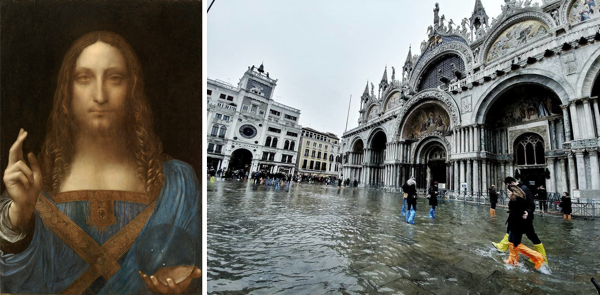Italian Renaissance Art

Italian Renaissance visual art surfaces in the news media and in contemporary culture in spectacular ways. This past year a painting attributed to Leonardo da Vinci sold on the art market for an astonishing 450 million dollars. Bill Gates, we hear, owns one of Leonardo's fascinating notebooks of drawings with his characteristic mirror-reversal handwritten notations. Author Dan Brown weaves the plots of his best-selling popular thrillers around paintings by Leonardo and Botticelli. The Piazza San Marco in Venice appears in news footage under water, as the city is said to be sinking and its fragile lagoon ecosystem threatened by colossal cruise ships. In this course, we will take this evidence of the enduring significance of Italian Renaissance art as a starting point for an in-depth survey of the period art, 1300-1550. We will examine how the works of artists like Giotto, Leonardo, Raphael, and Michelangelo came to be regarded as so important in the history of art and valuable as cultural artifacts. Why, even within the artists' lifetimes, was their art regarded as signaling the "rebirth" of painting and sculpture and Michelangelo called "the divine"? We will examine and contextualize the principal Renaissance monuments—Giotto's Arena Chapel, Botticelli's Birth of Venus, Leonardo's Mona Lisa, Michelangelo's David and Sistine Chapel Ceiling, among others. The Italian Renaissance will also offer a useful perspective for considering topics of current cultural relevance like the value of the visual arts in society, public support for the arts, and visual literacy.
Estimated cost of materials: $100 or more.
HISTART Concentration Distributions: 3. Early Modern, D. Europe and the U.S.
The assignments include a 6-8 page paper and two examinations.
Attendance of the lectures and the weekly section is required.
This course fulfills the LS&A Humanities distribution requirement